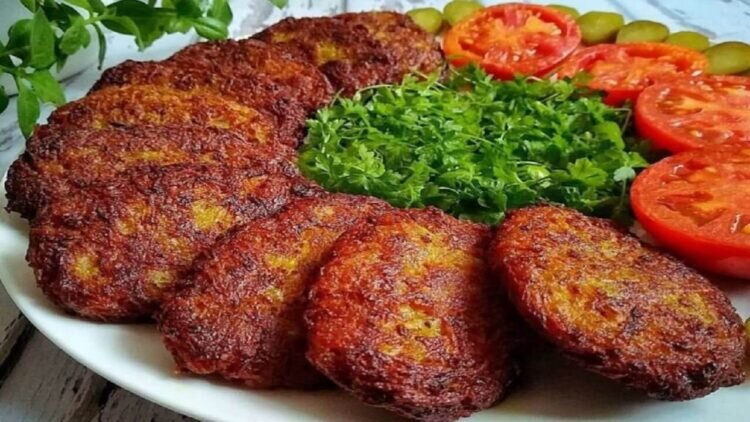Kotlets: the art of crafting Persian-style hamburgers

TEHRAN - Hailing from Middle Eastern culinary traditions, Persian kotlets are breadcrumb-coated patties crafted from a blend of ground meat and mashed potatoes.
These golden-brown delights are commonly served as a hearty main course alongside an array of side dishes or enjoyed cold as a sandwich. With roots deeply embedded in Iran, kotlets are affectionately known as Persian cutlets, reflecting the country’s historical connection to ancient Iran, originally Persia.
In the realm of Middle Eastern cuisine, kotlets emerged relatively recently, contrasting with older dishes like kafta or biryani. Their inception dates back to the early 1800s when a British ambassador introduced potatoes to the Persian royal family.
According to culinary researcher Matthew Wilson, pinpointing the exact origin date of kotlets is challenging. However, it’s evident that they only came into existence following the introduction of potatoes in 19th-century Persia.
Wilson has said the term “kotlet” likely finds its roots in the French word “cotelette,” meaning a small chop of meat, suggesting a connection to the concept of a cutlet. Despite a potential influence from the French language, kotlets undeniably stand as a distinct Iranian culinary creation.
Kotlets are typically made from ground beef or lamb, which is combined with mashed or riced boiled potatoes, an assortment of spices, seasonings, and occasionally eggs. This mixture is shaped into patties, lightly coated with flour or breadcrumbs, and then fried until achieving a delightful golden crispiness. The combination of ground meat and potatoes yields a soft, creamy interior, while the outer coating fries to perfection. Spices such as turmeric impart a deep, earthy flavor. Kotlets, being incredibly versatile, are served piping hot or cold, making them suitable for a full meal or a convenient grab-and-go snack.
Persian healthy hamburgers
Iranian cuisine boasts a variety of fried patties, both meat- and vegetable-based, with kotlets being a modern iteration that incorporated a novel ingredient – potatoes. Over the years, chefs have added their unique twists to the dish.
With around four million Iranians residing abroad, the popularity of kotlets transcends traditional borders. Often referred to as “Persian healthy hamburgers” by Iranians in North America due to their predominantly potato-based composition, kotlets feature ground meat combined with potatoes. Traditionally, lamb or beef, variations with chicken and turkey have gained popularity over time. While pork is forbidden in the Muslim faith, pork kotlets are available in other parts of the world.
Regional variations of kotlets can be found in Iran and the broader Middle East (West Asia). For example, in Karaj, shredded raw potatoes replace boiled ones, providing a distinct texture. Azarbaijan’s version includes chickpeas, imparting a creamy texture and nutty flavor akin to the Shami kabab. Kotlets serve as a sandwich base on various kinds of bread, from baguettes to pitas.
Kotlets frequently draw comparisons to cutlet dishes from various cultures, including German or Austrian schnitzel-style pork cutlets, characterized by their breaded and fried meat patties. In India, there is a widespread appreciation for vegetarian variations of cutlet-style patties, exemplified by recipes featuring curried chickpea and lentil patties, offering a flavorful and meat-free alternative reminiscent of kotlets.
They say no Persian meal is complete without an abundance of herbs. Every table is usually set with sabzi-khordan, a basket of fresh herbs, radishes, and scallions, which are eaten raw and by the handful. Persian cuisine is, above all, about balance — of tastes and flavors, textures, and most importantly, the impact that they have on the human body.
AFM
Leave a Comment